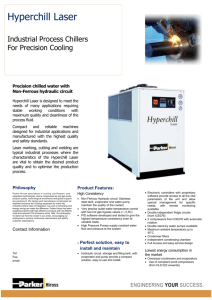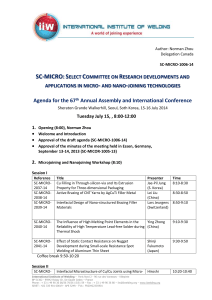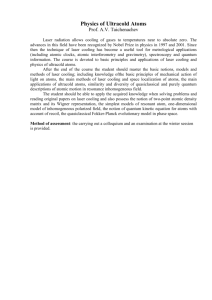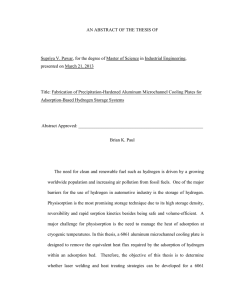Controlled Cooling of Laser Welded Alumina Ceramic Substrates
advertisement
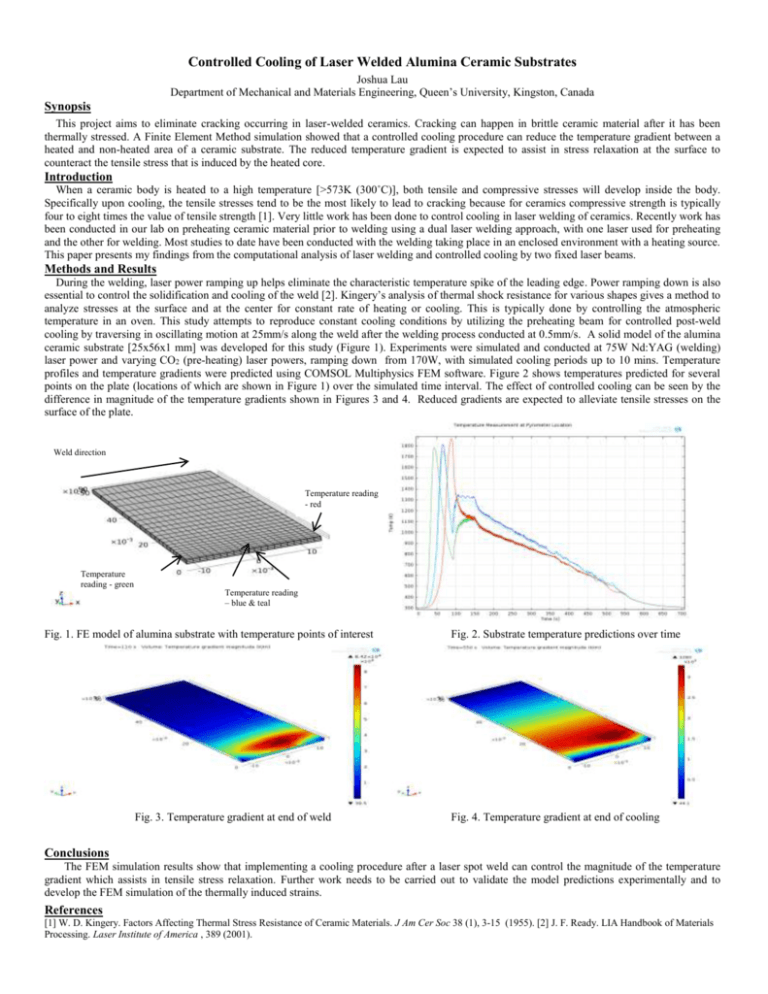
Controlled Cooling of Laser Welded Alumina Ceramic Substrates Joshua Lau Department of Mechanical and Materials Engineering, Queen’s University, Kingston, Canada Synopsis This project aims to eliminate cracking occurring in laser-welded ceramics. Cracking can happen in brittle ceramic material after it has been thermally stressed. A Finite Element Method simulation showed that a controlled cooling procedure can reduce the temperature gradient between a heated and non-heated area of a ceramic substrate. The reduced temperature gradient is expected to assist in stress relaxation at the surface to counteract the tensile stress that is induced by the heated core. Introduction When a ceramic body is heated to a high temperature [>573K (300˚C)], both tensile and compressive stresses will develop inside the body. Specifically upon cooling, the tensile stresses tend to be the most likely to lead to cracking because for ceramics compressive strength is typically four to eight times the value of tensile strength [1]. Very little work has been done to control cooling in laser welding of ceramics. Recently work has been conducted in our lab on preheating ceramic material prior to welding using a dual laser welding approach, with one laser used for preheating and the other for welding. Most studies to date have been conducted with the welding taking place in an enclosed environment with a heating source. This paper presents my findings from the computational analysis of laser welding and controlled cooling by two fixed laser beams. Methods and Results During the welding, laser power ramping up helps eliminate the characteristic temperature spike of the leading edge. Power ramping down is also essential to control the solidification and cooling of the weld [2]. Kingery’s analysis of thermal shock resistance for various shapes gives a method to analyze stresses at the surface and at the center for constant rate of heating or cooling. This is typically done by controlling the atmospheric temperature in an oven. This study attempts to reproduce constant cooling conditions by utilizing the preheating beam for controlled post-weld cooling by traversing in oscillating motion at 25mm/s along the weld after the welding process conducted at 0.5mm/s. A solid model of the alumina ceramic substrate [25x56x1 mm] was developed for this study (Figure 1). Experiments were simulated and conducted at 75W Nd:YAG (welding) laser power and varying CO2 (pre-heating) laser powers, ramping down from 170W, with simulated cooling periods up to 10 mins. Temperature profiles and temperature gradients were predicted using COMSOL Multiphysics FEM software. Figure 2 shows temperatures predicted for several points on the plate (locations of which are shown in Figure 1) over the simulated time interval. The effect of controlled cooling can be seen by the difference in magnitude of the temperature gradients shown in Figures 3 and 4. Reduced gradients are expected to alleviate tensile stresses on the surface of the plate. Weld direction Temperature reading - red Temperature reading - green Temperature reading – blue & teal Fig. 1. FE model of alumina substrate with temperature points of interest Fig. 3. Temperature gradient at end of weld Fig. 2. Substrate temperature predictions over time Fig. 4. Temperature gradient at end of cooling Conclusions The FEM simulation results show that implementing a cooling procedure after a laser spot weld can control the magnitude of the temperature gradient which assists in tensile stress relaxation. Further work needs to be carried out to validate the model predictions experimentally and to develop the FEM simulation of the thermally induced strains. References [1] W. D. Kingery. Factors Affecting Thermal Stress Resistance of Ceramic Materials. J Am Cer Soc 38 (1), 3-15 (1955). [2] J. F. Ready. LIA Handbook of Materials Processing. Laser Institute of America , 389 (2001).
